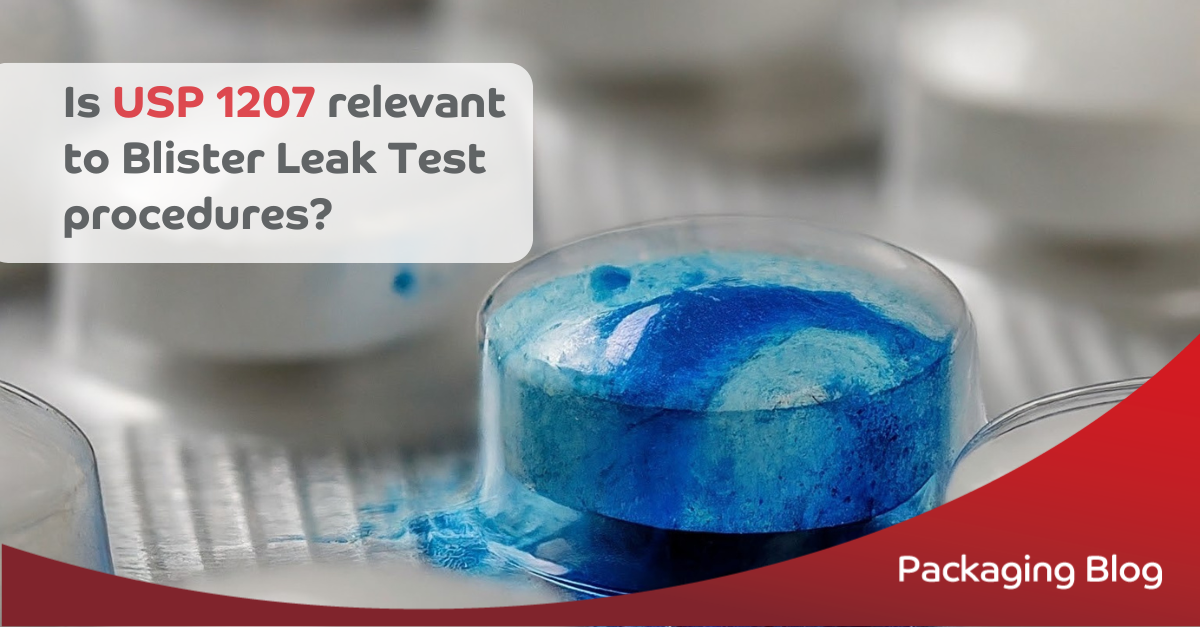When it comes to sterile packaging, the regulatory demands in pharmaceutical manufacturing are exceptionally high, with guidelines like USP 1207 playing a crucial role in ensuring product integrity and safety. While USP 1207 doesn't provide specific methods for pharmaceutical blister packs, it emphasises the need for deterministic testing methods that can accurately demonstrate package integrity. This blog discusses how the VisionScan 3D aligns with this need and provides a reliable package integrity test system that seamlessly integrates with existing quality assurance frameworks in pharmaceutical manufacturing facilities.
USP 1207 explained
USP 1207, known as the 'Package Integrity Evaluation of Sterile Products', plays a critical role in ensuring the safety and integrity of pharmaceutical packaging, particularly in parenteral products. This protocol outlines strict guidelines for Container Closure Integrity Testing (CCIT) and emphasises the use of deterministic leak testing technologies to guarantee the sterility of the contents.
To meet regulatory requirements, manufacturers are obligated to develop and validate testing strategies that align with the rigorous standards set by USP 1207. By following validated methods, they can effectively verify the integrity of their packages and uphold the highest quality standards in pharmaceutical manufacturing.
Implications of USP 1207 on Blister Packaging
The question of whether USP 1207 applies to blister packs often sparks confusion. While USP 1207 specifically targets the packaging of sterile products, manufacturers in the blister packaging industry frequently seek testing solutions aligned with its principles for enhanced reliability, even though it's not a mandatory requirement. USP 1207 underscores the critical importance of evaluating package integrity, and though it doesn't prescribe any method for blister packaging, it highlights the necessity for detection methods to be validated and appropriate for their intended use. The Sepha VisionScan 3D perfectly meets this requirement.
Alignment of VisionScan 3D with USP Guidelines
The VisionScan 3D utilises the principle of vacuum deflection in accordance with ASTM standard test method F3169-16 to identify defects as small as 5 microns in individual blister pockets. Its non-destructive and deterministic testing capabilities position the VisionScan 3D uniquely to meet the regulatory requirements of manufacturers seeking a reliable method for blister pack testing that aligns with the principles, if not the exact specifications, of USP1207. By adhering to the terminology, rationale, and methodology outlined in sections <1207.1> and <1207.2>, the VisionScan 3D doesn't just meet regulatory standards — it evolves alongside them.
Compliance with USP 1207 isn't solely about adopting an approved testing method. It also requires equipment certification, defined standard operating procedures, and staff training. The VisionScan 3D fulfils these requirements by offering not just a leak detection method, but a comprehensive system that seamlessly integrates with existing quality assurance frameworks in pharmaceutical manufacturing facilities.
How VisionScan 3D improves Blister Packaging
Improving the integrity of blister packaging directly leads to increased efficacy and safety of pharmaceutical products. The VisionScan 3D stands out by being non-destructive, providing quick and accurate results, contributing to reduced product waste, and offering a comprehensive data logging system — all pivotal elements that streamline the packaging process and validate quality assurance.
A new era of Innovation and Compliance
The VisionScan 3D is a reliable solution for ensuring blister pack integrity. While it may not be explicitly USP 1207-compliant, it's a close equivalent that seamlessly integrates with current manufacturing processes. It creates an environment where manufacturers can leverage advanced testing methodologies tailored to their products' specific needs, not as a compliance checkbox, but as a proactive approach to shaping a new era of quality assurance.
Related articles


